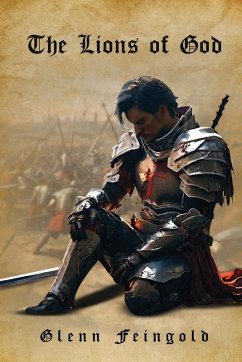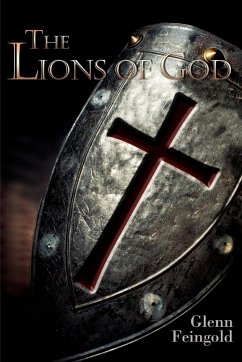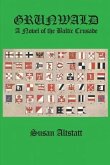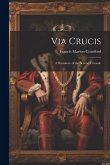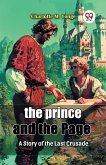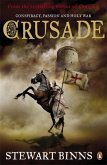My novel The Lions of God is set in the Middle Ages, so it has knights and maidens but no dragons. In fact many of its characters are actual historical figures. The story concerns Sir Guy of Lagery, a knight and nephew of Pope Urban II, who is sent by his uncle to fight in the First Crusade against the "infidels," and so wrest control of Jerusalem from their hands. Over time he and his companions succeed, and the city becomes one of the Christian kingdoms in the Holy Land.... for a while. As battles continue, Sir Guy and several other knights form a brotherhood known as the Knights of the Holy Temple of Jerusalem, then the Knights Templar, and finally the Templars. Initially the brotherhood is supported by Christian rulers the world over, turning the group into one of the wealthiest in history. The grand irony here is that. despite the vast wealth that they came to control, they were compelled to live their lives according to the three-fold rule of St. Benedict--a life of poverty, chastity, and obedience (to the church and to the laws of God presumably). These rules do not sit well with Sir Guy, since he prefers sensual and sexual excess, much to the disappointment of his uncle. Despite the considerable time devoted to his pleasures, the knight eventually meets and sometimes aids a number of historical personages including Eleanor of Aquitaine, Moses Maimonides, Saladin, and Richard the Lionhearted. He also seeks the Holy Grail and bears witness to the loss of Jerusalem at the hands of its former Muslim controllers. The novel is divided into three books. The first tells of the battles which constitute the First Crusade and the recapture of Jerusalem. The second relates the stories of the Christian kingdoms in the Holy Land and the rise of the Templars. The third and last tells that the Templars relocated to Paris, where they are ultimately betrayed by a French prince and a French pope, leading to the potential end of the brotherhood. A present-day historian researching the Templars provides the framing device for the story. Sent by a wealthy and reclusive shipping magnate to a ramshackle lean-to in New York, he finds a large tome there and opens it. The work is the memoir of Sir Guy. Not until its conclusion does the historian learn of his connection to the story and to the people who inhabit it. Writing this book involved a number of factors. As a child fascinated with the medieval world and its tales of brave knights and mysterious quests, I eventually studied medieval English and literature, as well as the French, German, and Latin languages. I suppose it was inevitable that I would write a tale set in that era. However, what prompted its creation was far more than the memories of a young boy thrilled with fantastic sagas.
Hinweis: Dieser Artikel kann nur an eine deutsche Lieferadresse ausgeliefert werden.
Hinweis: Dieser Artikel kann nur an eine deutsche Lieferadresse ausgeliefert werden.

